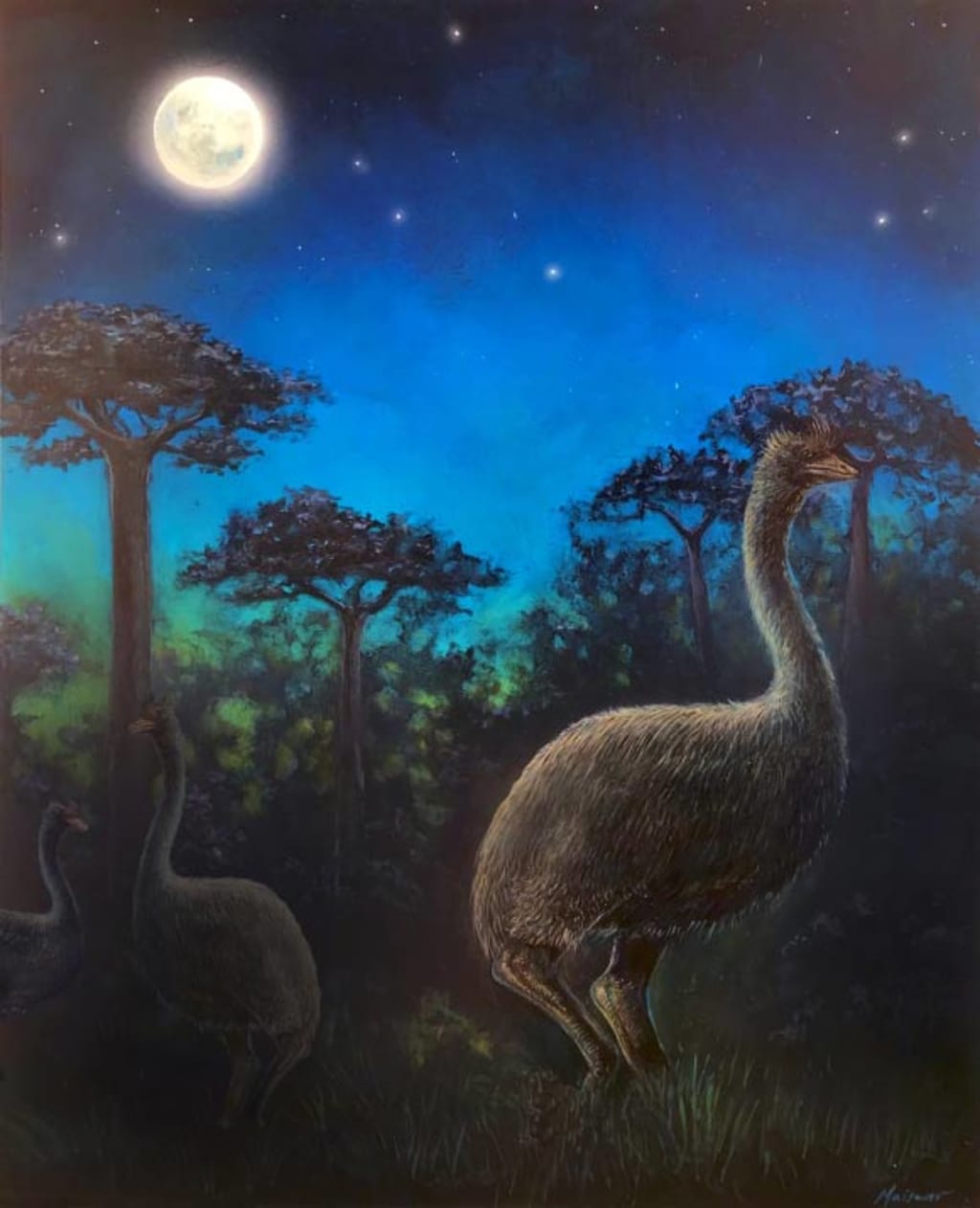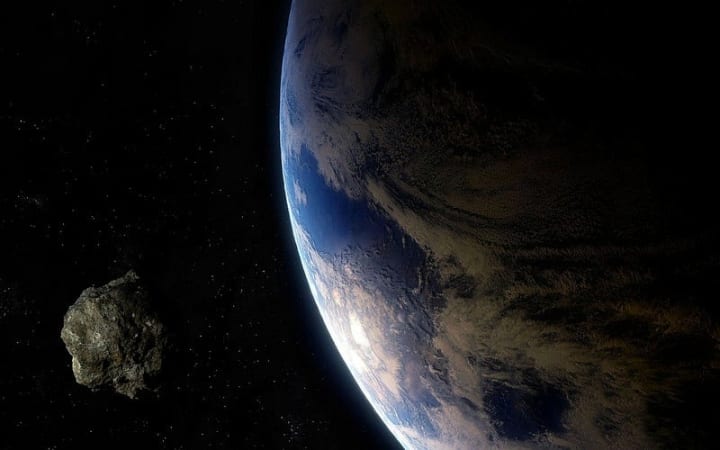The Largest Egg Ever Laid
You may find my five short-form stories interesting and educational.

British spelling.
All my stories are about the universe and life. Enjoy.
1/5
According to fossil records, elephant birds produced the largest eggs ever laid.
Vorombe Titan was the largest of the elephant bird species.
The massive, flightless bird stood 3 metres tall and could have weighed as much as 860 kg, or 1,895 lbs.
According to the Guinness Book of Records, one elephant bird egg was equivalent to seven ostrich eggs, measuring 40 centimetres or 16 inches tall, and would have held a volume of 11 litres or 19 pints of liquid.
They were native to the island of Madagascar and are thought to have died out around 1,000 years ago. Maybe our ancestors were partly to blame for their extinction.
13 species of elephant birds have been documented, and their closest relative living today is the New Zealand Kiwi.
<><><>
2/5
Thank an asteroid for your existence.

urikyo33 from Pixabay
An asteroid impacted the Earth 66 million years ago; if it had not, you would not be here.
That natural disaster is thought to have ended the 180 million-year-old dinosaur reign.
Some avian dinosaurs survived; We see them today as birds.
The Chicxulub impact site is centred on the Yucatan Peninsula in Mexico.
The asteroid is estimated to have been between 10 and 15 km wide. The crater that was left is thought to have been 150 km in diameter.
Imagine if that asteroid had missed our planet; There is no reason to disbelieve that many species of dinosaurs would still be walking the Earth today.
From that disastrous day on, life on our planet took a very different evolutionary path; The small mammals could at last spread out and evolve into much more complex species, including me and you.
<><><>
3/5
Do you know the origin of the domestic cat?

Cats are the second most popular pets throughout the world, with dogs being the first.
The relationship between humans and cats stretches back over 10,000 years and is thought to have begun in modern-day areas of West Asia.
All domestic cats can be traced back to the African wild cat (Felis sylvestris Lybica).
Wild cats can be found throughout most of Africa, parts of Asia, India, and Mongolia.
The average lifespan of a domestic cat is between 13 and 17 years. The oldest recorded age of a cat is 38 years. It lived out its life in Texas.
It is said that the first year of a human's life is equivalent to seven cat years, but a one-year-old cat is more mature than a seven-year-old child.
<><><>
4/5
When the Earth had no oceans.

For many millions of years, the Earth had no oceans.
Our planet was a violent and extremely hot world billions of years ago.
Its surface temperature was far too hot for liquid water to accumulate.
Plenty of water was in the atmosphere but in the form of gas.
Roughly 3.8 billion years ago, the Earth had cooled below the boiling point of water, which is 100 degrees Celsius or 212 degrees Fahrenheit, and then the rain started to fall from the sky.
The rain continued to fall for centuries, slowly filling up the low-lying parts of our planet and forming the oceans and lakes.
The gravitational force of our planet was able to hold onto the water. Otherwise, it would have been lost to space.
<><><>
5/5
The reason sleeping birds do not fall off their perch?

You may find the explanation surprising.
Regarding legs.
We have two long bones; one goes from the hip to our knee, and the second bone goes from our knee to our foot, which forms a V shape.
Perching birds have three long bones that give their legs a Z shape. One bone goes from the body to the knee, the second from the knee to the ankle, and the third to the foot.
Perching birds have four toes on each foot, with three facing forward and one facing back.
When a bird lands, it opens its claws and grips them around the perch. It then sits on its ankle, and that action pulls at the tendons in its feet, locking its toes in place.
This locking system can only be released when the legs are straightened for flight.
The end
<><><>
You may find my easy-to-understand stories about the universe and life interesting and educational.
If you subscribe to me for free, you will see my latest stories. Regards.
About the Creator
Unravelling the Universe
We can only imagine what our early ancestors thought as they gazed up at the night sky—were they curious about what the heavens had to hide?
Enjoyed the story? Support the Creator.
Subscribe for free to receive all their stories in your feed. You could also pledge your support or give them a one-off tip, letting them know you appreciate their work.






Comments (1)
Wow, this was a very interesting article. I have never heard of elephant bird eggs and we no oceans. Never thought about that. Thank you for sharing.